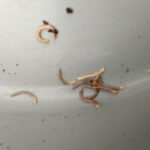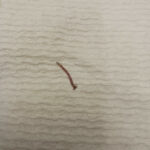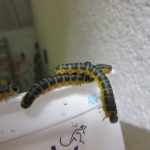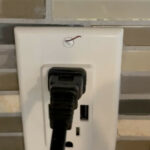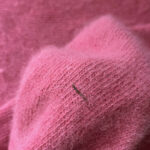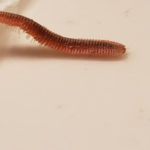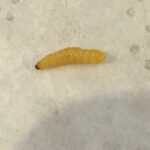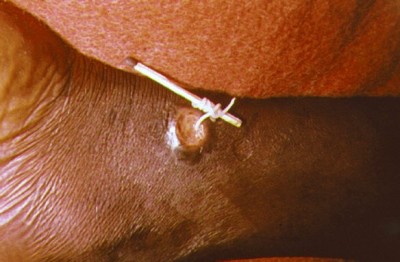
Today we received an excellent photo of a black millipede beside a penny, and the photo was accompanied by one simple question: what is this? Presumably, the reader didn’t know that he found a millipede, so we have more or less answered his question, but we’ll say a couple of more things about millipedes below, and also explain why we think he found millipedes.
First, here is the picture the reader submitted along with his question:
We think this is a millipede for the simple reason that it looks exactly like a millipede and like nothing else. The obvious giveaway is the creature’s legs, the large number of which is the classic feature of a millipede. Centipedes also have lots of legs, but their legs are longer and tend to extend from their bodies, making them a lot more noticeable. In the picture above, you can hardly see the creature’s legs at all. Millipedes also have two pairs per body segment (except for the first three segments), whereas centipedes only have one pair. The picture is too small to reveal this kind of detail, but the dense cluster of legs on the inner side of the creature’s coil suggest it is millipede. (Indeed, the fact that it is curling into a circle suggests it’s a millipede.) Millipedes are also very common, and people often find them in their houses, especially after fluctuations in the weather. This tends to happen as seasons are changing, but it can happen during other parts of the year as well.
So, we are confident our reader found a millipede. This is perhaps all our reader wants to know, but if he was looking for us to name a specific millipede species, we unfortunately cannot help him with this. There are around 12,000 known species in the class Diplopoda, which millipedes make up, so the number of possible species is quite broad. We also have no idea where our reader lives or in what circumstances he found the millipede, so we can’t use this information to narrow down the species. He also found a fairly generic-looking millipede – it doesn’t have any distinguishing body features that we can see, and it also isn’t notably large or small. In truth, a close examination of the creature in person, in consultation with specialist literature, is probably the only way someone could definitively name the species that our reader found.
Again, though, the reader expressed no interest in getting an exact species identification, and he also didn’t seem to know he found a millipede, so we’ll assume our answer is satisfactory and move on to the next question in our electronic pile.
All About Worms is always free, always reader-supported. Your tips via CashApp, Venmo, or Paypal are appreciated! Receipts will come from ISIPP Publishing.
You might also find these guys interesting!




